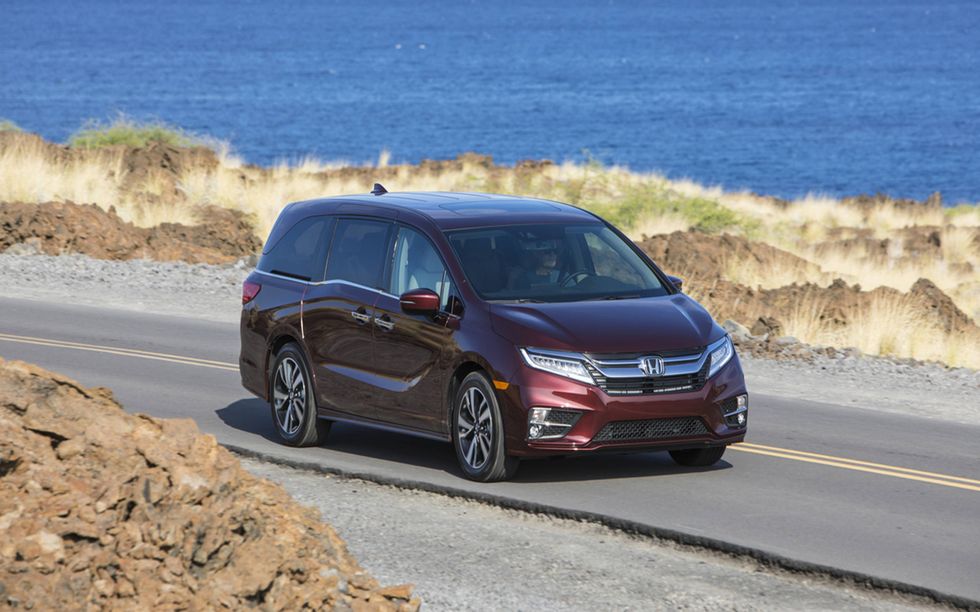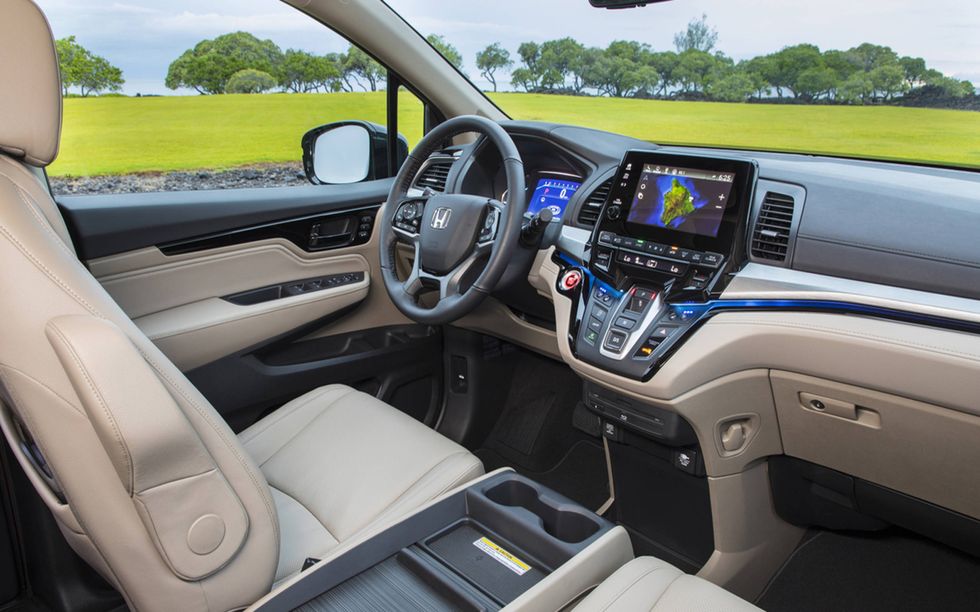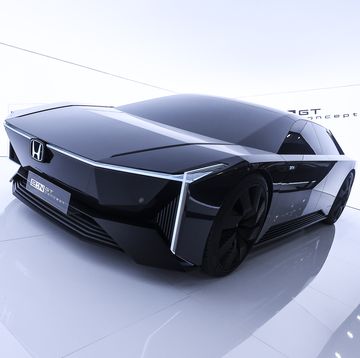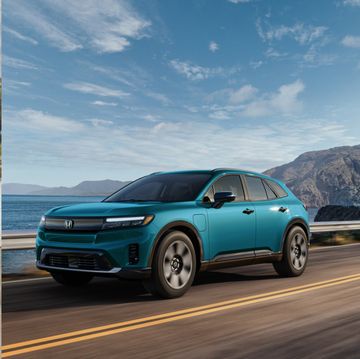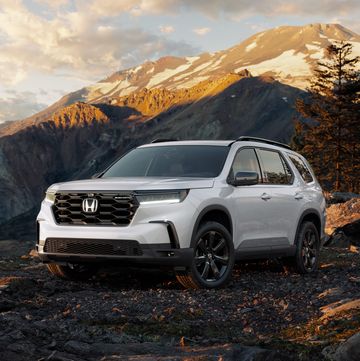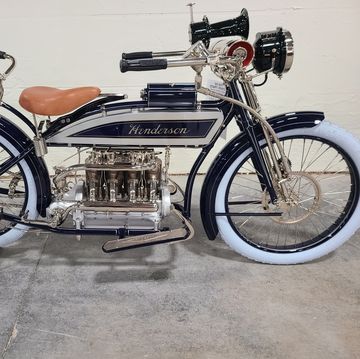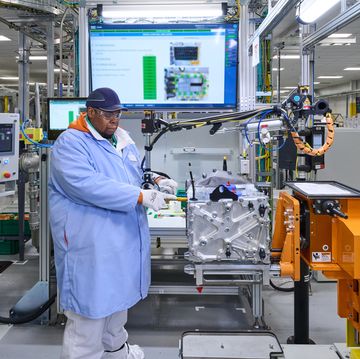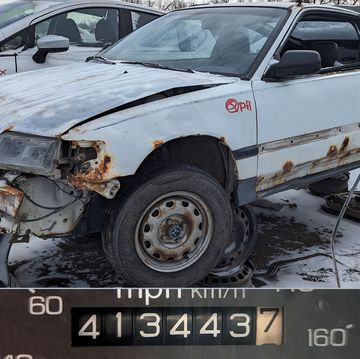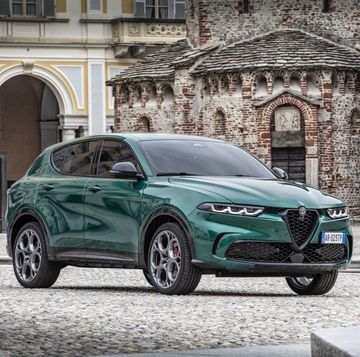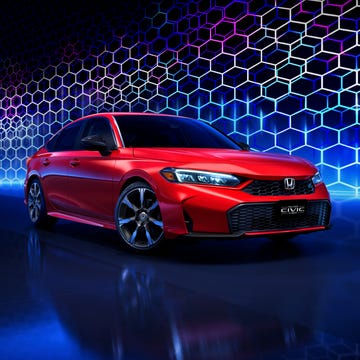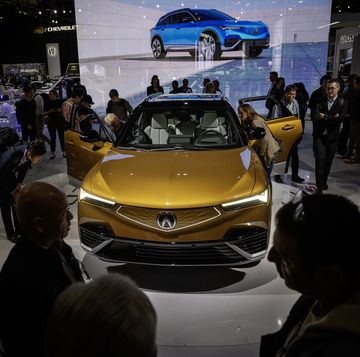The Odyssey of the Mind is an international youth competition focused on developing inventive solutions to arcane technical, structural or engineering problems and presenting them in a compelling and performative manner.
Honda's all-new, fifth-generation Odyssey minivan is similarly mental. Its development demonstrates an obsessive deep dive into vexing issues, and the answers it offers are at once innovative and entertaining.
Of course, like Odyssey of the Mind, these solutions are also somewhat senseless to anyone who isn't already deeply invested in the category -- like me and my boyfriend, a pair of aging, childless, urban homosexuals. "If you're out in the audience," says our 15-year-old niece of OOTM, as we drive her around Kona on Hawaii's Big Island during our recent family test drive of the 2018 van, "it kind of just looks like a bunch of weird skits."
The minivan category needs all the creativity it can muster. The American market for these family schleppers hit its peak at the end of the last century, with annual sales around 1.4 million. They've since plummeted and stabilized at just over 500,000 per annum, but so far this year, they're down almost 20 percent versus 2016. As with every other segment of the American automotive marketplace, their milkshake is being guzzled by crossovers, which -- along with their more trucky counterparts -- now account for nearly two in every three U.S. vehicle purchases.
That's a shame; minivans can do so many things SUVs can't. With their one-box layout, they offer amazing capacity and flexibility for passengers and cargo. With their dual-sliding rear doors and low-load floor, they provide unparalleled ease of ingress and egress. They provide superior fuel economy, thanks to thoughtful aerodynamics and lack of need for butch/compensatory AWD systems and oversize engines. And with bountiful cup holders, USB ports, headphone inputs, screens and climate-control zones, they grant passengers an indulgently individuated experience only an Emirates Airbus can rival.
Sadly, despite -- or precisely because of -- all this utility, minivans suffer from the same massive style deficit ordinarily associated with New England spinsters. And recent attempts to make this pragmatism look "cool" (see: Nissan Quest, outgoing Honda Odyssey) have yielded results more akin to something developed by Dr. Moreau than Dr. Martens.
Happily, the new Odyssey rectifies some of its predecessor's stylistic foibles. Leading the list of improvements: Honda eliminated the visible track for the rear sliding doors, a cut-line on the previous-generation van. That, along with the signature zig-zagging "lightning bolt" behind its C-pillar, grants the vehicle's rear third the appearance that it had decided to secede from its front section but had not quite succeeded.
Given the category's limiting exterior conventions, the Odyssey's real effort at differentiation occurs inside, and here it truly shines. Like an OOTM national championship, the minivan segment is extremely competitive, and notable distinctions stem from deciphering and resolving obscure issues. While Chrysler has chosen to focus on the ability to create a flat rear-load floor with its patented Stow 'n Go seating system, Honda recognizes that the typical minivan owner's vehicular stable often includes something else better suited to carting sheets of plywood; to that end, the emphasis has been placed on passenger comfort and contentment.
Sure, the Odyssey's third row flops in on itself, affording ample space for the 60 boxes of chicken nuggets the average van-owning family consumes weekly, but the three-place Magic Slide second row privileges seating flexibility over cargo capacity. With the center seat removed, the other two seats can glide fore and aft and side to side at whim, creating proximity or distance vis-à-vis each other, or the first or third row. This lends itself to the divine family harmony derived not from togetherness, but separation. To wit: Surrounded by breathtaking tropical beauty and unfettered access to her favorite uncles, our teenage niece uses this capability to scoot away from us, recline, update her Snapchat story and fall asleep.
If you like to use visual or verbal threats to corral your mischievous offspring, Honda has you covered in that department, too. The new Cabin Watch feature, integrated into the center console's expanded 8-inch touchscreen, allows the driver to activate an infrared surveillance camera -- its fish-eye lens lets them zoom in on the face of any individual passenger, including those strapped helplessly into a rear-facing safety seat.
Even more Orwellian is Cabin Talk, which lets drivers broadcast their voice over the van's rear-mounted speakers and/or beam their words directly into passengers' wireless headphones, handy for settling arguments about who is touching whom or generally reinforcing the terrorizing myth that parents are omniscient. If none of that works to shock and awe your young passengers, the van can also be driven at full speed with the sliding doors completely open, an experience that has our niece in hysterics. (Also a highly effective tactic for drying beach towels.)
While Honda used to integrate multiple monitors into their van, they've winnowed it down to one in the new Odyssey. The product planners allege this is intended to foster family harmony—we all watch together!—but we call B.S. on this and eventually get an engineer to admit it's really because most occupants now bring their own screens. Made easier by an optional AT&T 4GLTE Wi-Fi hotspot, true harmony arrives only when everyone is silently cocooned in their individuated entertainment stream. Gobs of additional soundproofing insulation helps muffle the inevitable screams that will ensue when you enter a remote area devoid of cellular coverage.
Challenging all of this harmony in the guise of fostering it is Honda's new Cabin Control app. Able to sync with up to seven phones, this system allows passengers to wirelessly accomplish tasks like adjusting the rear climate settings, controlling the video entertainment system, sending navigation destinations to the center screen and adding songs to an ongoing queue. Only one phone can control a feature at any time, and an educated driver can customize individual access, but this still seems like a recipe for disaster to us: tech- savvy kids maneuvering to manipulate every aspect of the cabin while antiquated parents struggle to find the proper submenu for blocking entrée before the rear seats become a sauna and Future's drug- and expletive- ridden "Mask Off" plays on endless repeat. Simply by virtue of distraction, our niece cools the third row to near-arctic conditions and then tricks us into following her route to Starbucks in search of a cup of whipped Unicorn Goop.
On the nearly $50,000 Odyssey Elite we drive, our two-uncle OOTM team comes up with the solution of adding a timeout button to the Honda's steering wheel, one that could send a brief, stunning blast into all rear headphones and speakers, simultaneously disabling all devices. Barring that, we suggest testing a brick-and-mortar fix: slinking the Magic Slide seat forward far enough to enact the kind of backhanded physical threats so beloved by our own parents. But sadly, the treacherous Hawaiian roads fails to provide a safe test opportunity, even with Honda's suite of semi- autonomous driver's aides enabled.
Luckily, our niece had grown up in a Honda Odyssey. "From personal experience," she says, "I can tell you that a parent can definitely reach back far enough to smack you."
This article first appeared in the June 26 issue of Autoweek magazine. Get your subscription here.
Vehicle Model Information
ON SALE: Now
BASE PRICE: $47,610
POWERTRAIN: 3.5-liter V6; FWD, 10-speed automatic
OUTPUT: 280 hp, 262 lb-ft
FUEL ECONOMY: 19/28/22 mpg
